Tracy Sigler — Basement Skateboard Mini Ramp
Author: Tracy Sigler | Posted: October 2nd, 2007 | | Tags: Handmade, skateboard, woodwork | 51 Comments »Here is how I built a mini ramp for skateboarding in my basement. It’s less of a “how-to” than a “how-I-did-it.” I built a number of ramps growing up. Also, I was a steelworker in a shipyard through my twenties so I have my own methods of working from that experience that may be helpful to some folks.
I should have blogged this as I was doing it. I did post a project log in the forums at RampPlans.org, but even some of that was well after the fact. Even though I’ve built a number of ramps before, I learned a lot from many of the previous contributors to RPDO.
Let me state now that this is not the normal way to build a ramp. Usually, you complete the entire frame and then add the layers. For the reasons I mention below, I made this using modular construction. You know, the way aircraft carriers are built.
This ramp has been done for almost nine months and I skate it almost every day. I kept putting off posting it because I wanted to format it to be easier to understand, but now I just want to put out there.
Ramp Specs
- Working space: 12 ft x 24 ft
- Width: 12 ft
- Flat: 8 ft
- Trans: 6.5 ft
- Trans ht: 36 in.
- Total ht: ~ 40 in.
- Decks: ~ 30 in. deep
Other requirements
We’re remodeling this house and I want to be able to move the ramp outside when the time comes. I’m building it in a away that will allow me to remove only the top layer to get each module out the door, which also means the decks couldn’t be an integral part of the transitions.
Materials
Below is a list of the material I ordered. And I say “ordered” because I picked up the phone, told Home Depot what I wanted and when. I don’t have a truck and I think $59 to have it brought right to my door is a good deal. You don’t have to stand in line to check out or schlep all the wood around, load, unload etc. I got maybe a dozen extra 2x4s, and a couple extra sheets of 3/8 ply.
Here’s how the lumber arrived. One nice chunk wrapped in plastic in case it rains.
Something not on the list above is screws. Someone on the RPDO forums recommended “Deck Mate” screws. I’ll be eternally grateful to that guy, whoever he was. These things are the best. I got three 5 lb boxes of different lengths. Those are about $26 each but worth it. No slipping, no snapping screw heads off, they have some kinda lube that makes them easy to drive. Here’s a pic so you know what to look for. I haven’t seen them at Lowes, only Home Depot. Maybe it’s their house brand.
Transition Sections
Coping Notch
I made this diagram to help figure out the notch in the transition pieces for my coping. It’s pretty straightforward, but I thought some folks might find it helpful.
Some builders say that no matter how careful you are in planning and construction that you will end shimming the coping into place. That may be true but you gotta start somewhere. Since this ramp was built on a near perfectly flat slab, and I was really uptight about the cuts and fit up, it worked for me.
Scribing the Transition Radius
Most folks like to use the good ol’ string and pencil method to draw the curve on their transition templates. Back when I was a youngster I did that plenty times when we were building ramps. For the transition template on this ramp I used trammel points. You can buy them at a lot of places and there are many types. The ones I have are some ancient hand-me-downs. Each one has a metal pointer for scribing or scratching, but you can replace one with a pencil. If you don’t have those you can also use a scrap 2×4 by putting a screw through one end and drilling a hole for a pencil at the other end.
Then you just clamp those babies to something like a 2×4 and dial in the radius you want.
My transition pieces don’t have the deck area as an integral part because I need to be able to get them out the basement door eventually. So, I started by laying two sheets together and snapping a line at 81.5 inches, 3.5 for the 2×4 on the bottom plus my radius of 78. Then, I put the pencil point at the top of the transition and put the other point on the chalk line. That was an easy way to find the center point for the radius. I measured from there to edge to get the bottom dead center, where my template would end. And then transferred that measurement to the other sheet.
With everything in place we started swinging an arc.
Framing Layout and Prep Work
Here’s how I did the rest of the work on the transition pieces. I put my ribs on 8 inch centers. To step off where they should go I used dividers. This may look like a compass, but trust me, they’re called dividers. This is a pic of my ancient dividers.
I used the scale from my combination square to set the dividers to 8 inches. It’s not a ruler, it’s called a scale.
Then stepped off the 8 inch centers, making a scratch to mark each one.
After that I grabbed a piece of scrap 2×4, centered it by eye on my marks, and traced around it to help me mark the screw holes.
I quickly eyeballed the screw holes and marked it with a pencil. You can measure if you want, but I don’t think that’s necessary. I drilled those out first.
Cutting Out the Templates
Finally, I cut out the whole transition piece with a jig saw. Take your time and be as accurate as possible with this one. You’ll use it as a template for the rest. Once that’s done I clamped it to the other side of the plywood sheet. Sometimes plywood is not as square or as machine-perfect as you might expect. It’s important that the bottom edge and the top corner line up as closely as possible. I used a framing square hung over the side to make sure everything was even.
Once everything was lined up I used some quick clamps to keep it in place.
First I traced the outline. Then, I used the holes I drilled in the first piece as a hole template and drilled through those.
When that was done I removed the original template and cut the next piece out. Rinse and repeat until you have all your pieces. For this ramp I needed 12.
Framing the Transitions
Once I had my plywood transition pieces cut out I started on the 2×4 ribs next. I used some scrap as a table and screwed the base of my miter saw to it. Then, I set up a work stop to the length of my ribs so I didn’t have to keep measuring. I just screwed some more scrap pieces together to make something. This saves so much time over marking and lining up each piece.
I cut my pieces to come out about 1/16 inch short of 48 inches once the sides are attached (48 – 3/4 Plywood – 3/4 Plywood – 1/16 Fudge = 46 7/16 Ribs). That seems to make up for various imperfections, like inconsistently thick plywood. I have six transition sections and each needed 13 ribs (I added another later, so 14). Henry Ford would be proud…
Prior to assembly I started the screws in all the holes. It takes some time, but it really saves time.
If a screw hole ends up on a knot in the plywood it’s best to countersink or counter bore it with a large drill bit. Knots are so hard that the screws always seem to strip out the 2×4 before they can pull the screw head flush. And it’s gotta be flush if you’re putting sections together. Same goes for surface layers too.
When I put these together I like to start with the back bottom brace. It’s the least critical as far as fit-up, and then at least the pieces can hold up themselves.
And here’s a section all framed up. I put my ribs on 8″ centers. That’s plenty close enough considering I’m laying all of my plywood layers with the grain going up the transition.
Transition Base Layers
I decided to put plywood on with the the grain running perpendicular to the ribs, also known as the hard way. I grew up building vert ramps with larger transitions and that’s just how we did it. Also, if you were sheathing a roof or floor on a house you would never lay plywood parallel to the framing, it would just be too weak. I want this ramp to be as rigid and fast as possible. I’m old and I need all the speed I can get.
In hindsight, this was probably at least five times as much work. My transition radius is 78 inches and the plywood was only 3/8 but it was very difficult to bend it into shape. That said, I was able to do it working mostly by myself. I only had two pieces crack and that was on very cold days. I just put an extra rib where the cracks were.
To start I screwed a scrap 2×4 to the front of the transition section to hold the first layer in place. Then, I put some extra studs under the section to raise it so there was room for the quick clamps. I laid a 2×4 across the middle of the plywood and used some screws to hold it in place. I made sure the screws didn’t stick through the back of the plywood. Finally, I started squeezing it down as I stood on it. Once it was down tight to the transition I popped some lines and screwed it down. I only used 5 screws per rib since each subsequent layer would add more.
I offset my second layer six inches in both directions. Maybe I should’ve done a little more but since I need to keep this somewhat modular I rolled with that. Since you can’t pop a line on a curved shape I set my combination square to 6 inches minus a bit for the width of the pencil line and stroked a line on two sides, left and bottom.
Then, I repeated the process on the second layer. This time I used the scrap 2×4 at the 6 inch line to hold the piece in place. The second layer is harder to clamp because of the offset but if you’re patient you can find a way to get clamps to reach.
After each section was done I slid them together. This pic shows them before I screwed them together, snapped a line, and trimmed off the excess at the top. I know a lot of people install the coping before the initial layers, but I don’t know why. That said, I will install the coping before the final layer so I can butt it up to it.
One downside of running the grain in this direction is that there is so much tension on the frame that it deflected the top rib, which was laid flat. This left the ramp wavy at the top. To fix it I installed another rib as a T-brace behind it and jacked it in there as well as I could. It’s decent now, but what a pain. I never had this problem on vert ramps because of the bigger transition and the fact that by the time you get to the last rib it’s going vert or flat so there isn’t as much tension. Bottom line is this ramp is very stiff, but it was lot of work. It may not be worth it to you.
Flat Bottom
Again, I’m building this ramp in a way that will allow me to move it easily when the time comes. Some of this won’t make sense for a typical build.
My flat is 8 feet long. I built each section to support a 4×8 sheet of CDX. Since I was tired of crawling around on my knees I built them on the saw horses. First, I snapped a grid for all my screws. Since this ramp will sit flat on a concrete floor I went with 12 inch centers.
Next, I attached the long 2x4s first by clamping them to the sheet, and driving the screws from a comfortable position, for a change. I used a framing square to make sure the edges were flush.
On these long pieces I offset the screws along the edge a bit so they wouldn’t foul the screws that go into the ribs.
Then, I flipped the whole thing over and attached ribs to the long side studs.
This is probably obvious to some folks out there, but if any of your 2×4 pieces have a knot like this, be sure to put the knot on top. The 2×4 will be a lot weaker if it’s on the bottom. It wouldn’t really matter on this flat section since it’s directly on the concrete, but I put them in the right way out of habit.
With all the ribs in place I flipped the section back over and finished screwing down the plywood.
Once all the three flat sections were done I laid them in place and started aligning them with the transition sections. I used the second layer of plywood to hold everything thing together.
Decks
OK. The next thing I did was build the decks and attached the coping. The decks are about 30 inches deep. I started by building the frame, working in the flat section which at this point only has the first two layers on it.
As I’ve mentioned, I will eventually need to get this ramp out the back door. So, in my tranny sections the 3/4 plywood doesn’t come all the way back as integral part of the deck. Normally it would, but in this case it would be impossible to get the transitions out the door sideways.
I used quick clamps to the hold frame to the transition sections and I also clamped studs on the back. After I checked it with a level I screwed it all together. Then I went back with a reciprocating saw and cut the studs flush. All that’s similar to building a deck for your house.
To keep this thing solid I added jack studs like this on the end.
Where the 8 ft section met the 4 ft section I turned the jack stud sideways to catch both.
I was running out of plywood so I used my scraps from the tranny templates. They weren’t quite big enough so I ended up with some clipped corners. I just put those on the back. To make installing the coping a little easier I left these off until that job was done.
Coping
While the deck was still open I installed the coping. I chose EMT (electrical conduit). It’s about 2.375″ OD, galvanized, and maybe a little too slick. It comes in 10 ft sections, so I had to add a 2 ft piece on each side of this 12 ft wide ramp. To connect it to the ramp I used clothesline bolts. I think they’re easier to work with and stronger than toggle bolts. Some folks like the sill plate bolts used in concrete foundations, but those can be harder to find at some stores. Clothesline bolts also come in a variety of sizes.
I drilled my holes in the framing first, then transferred those to the EMT. I put three bolts in each 10 ft piece and only 1 in the 2 footers. EMT is pretty thin-walled so once you have a pilot hole drilling the big hole is pretty easy. Here’s a bolt locked and loaded.
Put the coping in place on the ramp, add some fender washers and the nuts and you’re set.
The joints in the EMT came out pretty tight. I shimmed one side to get it perfect, but since it’s only 2 ft from the end I doubt any small bumps would bother anyone.
Surfacing
Of course, as soon as this thing was barely together I started skating. In fact, I started skating as soon as I had one transition section done. Try to resist that urge and you’ll finish the ramp sooner.
Anyhow, you definitely want to put on the final layer after the coping is in place. That way you can butt it up nice and tight to the coping. I used B/C plywood with the B side up, of course. I would have rather used some Skatelight or similar but who has that budget? The ramp is inside so plywood was good enough. I will say that the B/C still has some voids in the inner plys. Once it had been skated for a while some of those collapsed leaving small, but annoying dents. Definitely put the grain on your top going with the direction your skating, or your ramp will be pretty slow.
Since I was using full sheets I used a tape to measure 8 ft down the transition in couple place and marked it. Then, I temporarily screwed a 2×4 in place.
That way the 2×4 can hold the sheet in place, allowing you to walk on it to get it into place. Once you get the plywood to snap past the coping it will probably hold itself in position. To make it easier you may want to add a half inch or so to your measurement. That will make it slacker, and easier to get the plywood under the coping.
Once in place start some screws on the top edge. Work your way down each rib and any slackness will almost certainly be eliminated. I suggest you start by screwing each rib in the center. If you work from the same edge each time there is a tendency for the sheet to get out of alignment. Once all the transition sheets were on I measured the middle of the flat, which was less than a full sheet and cut those pieced to fit.
I had to buy extra screws a couple times and I lost track of exactly how many and what sizes I used. I think you can get away with using shorter screws for this last layer, and they’re easier to drive home.
The last thing I did was roll on some flat white paint. It helps keep the dust down and minimizes splinters.
This is a pic of the transition. The skateboard should help with scale. It looks a little slacker than it feels. For me, a radius of 6.5 ft. turned out to be perfect. And the few neighborhood rats I’ve let in to check it out like it too.
Here’s a standing skater’s eye view from the deck.
A view from the basement stairs before the ramp was painted.
Another pre-paint view, from across the room.
Behold… the beginning! When you think about it, do you really need a laundry room?
That’s all there is to it. Go big!

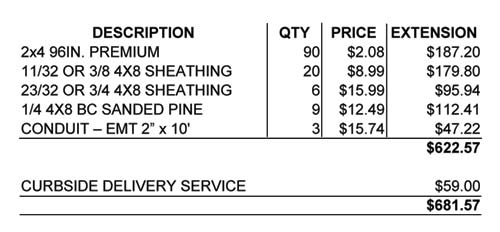
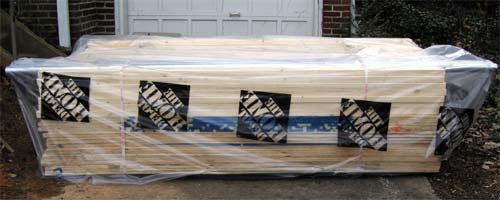
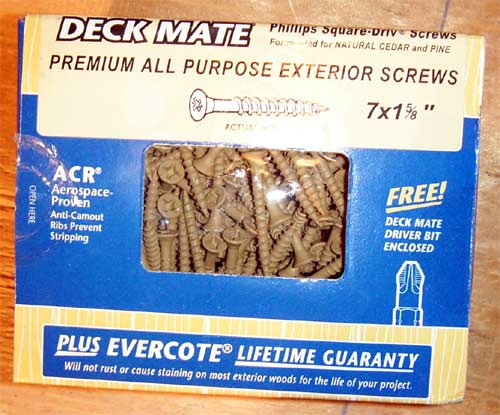
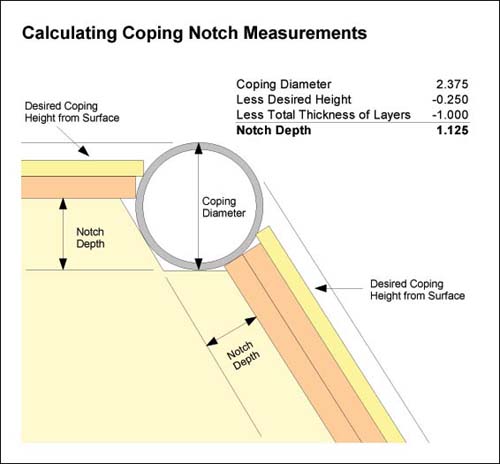
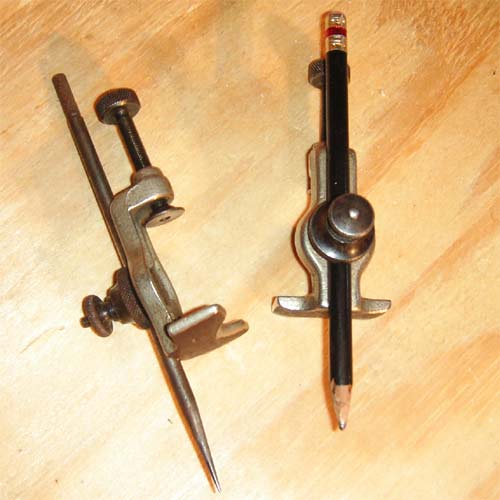
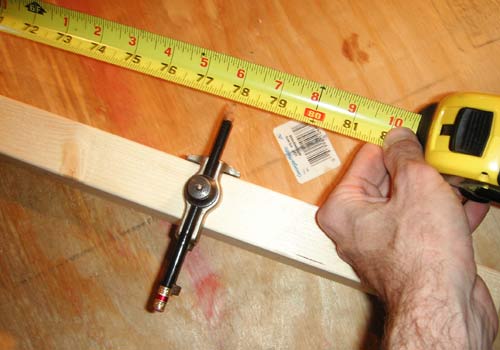


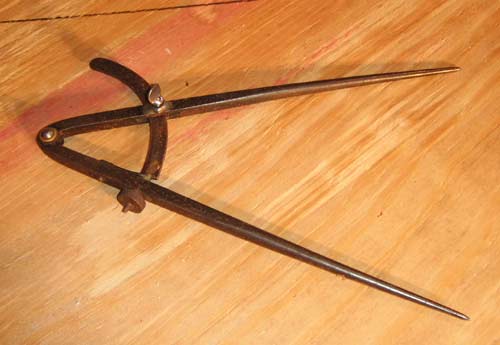
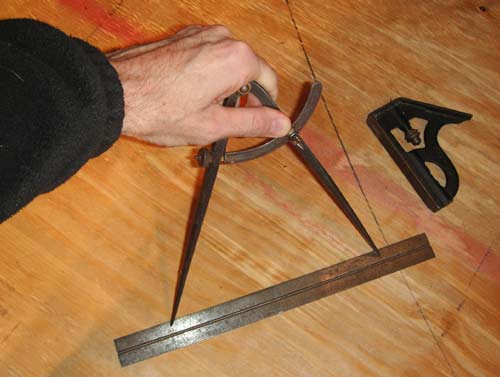
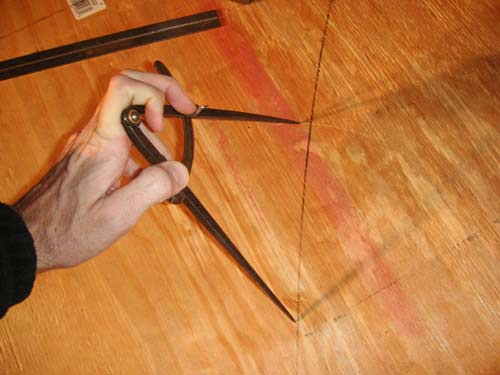
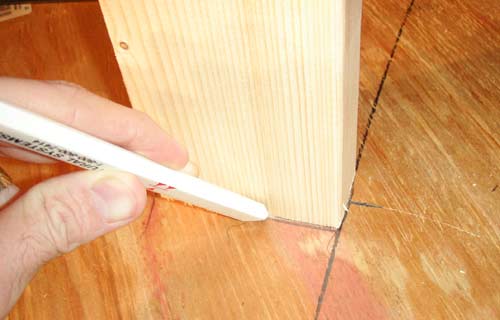
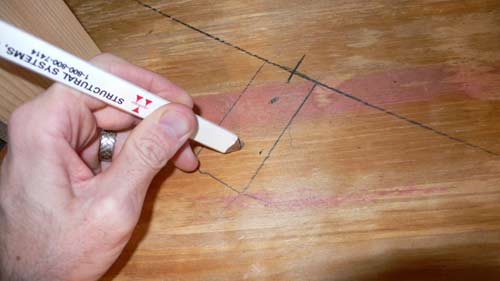

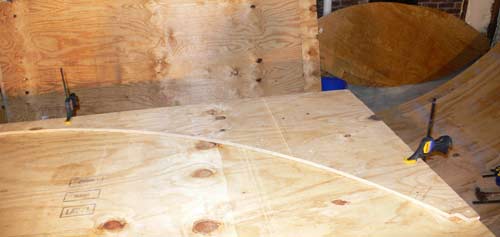


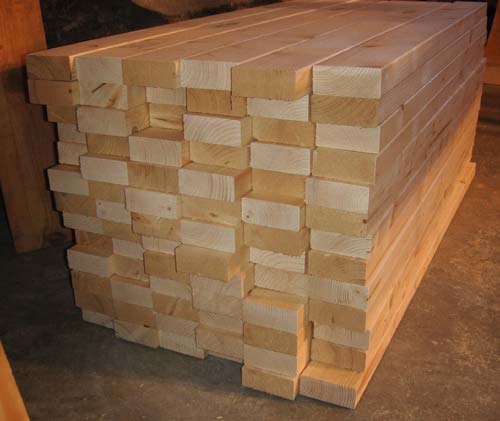



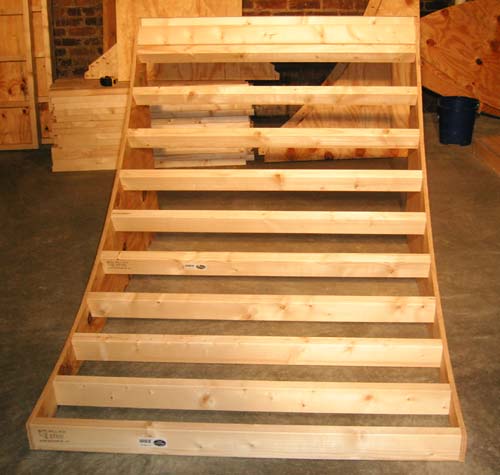
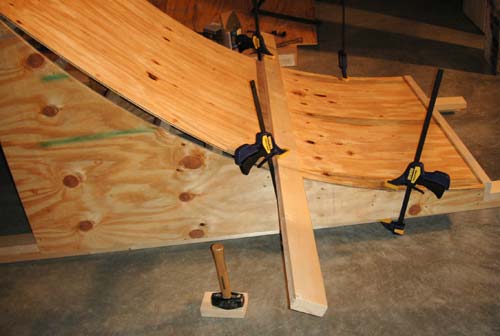
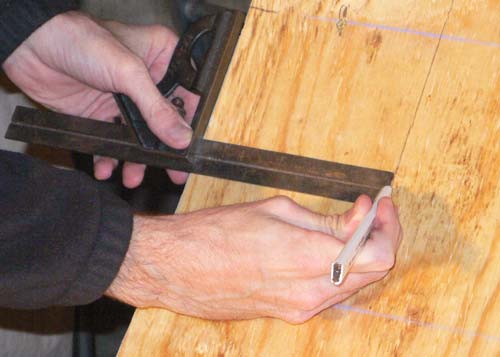
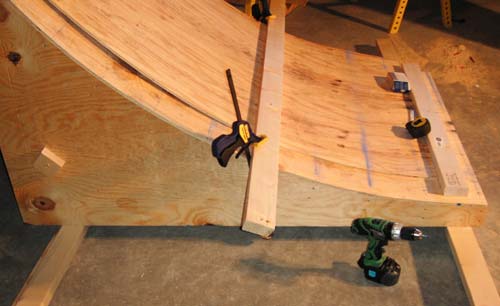
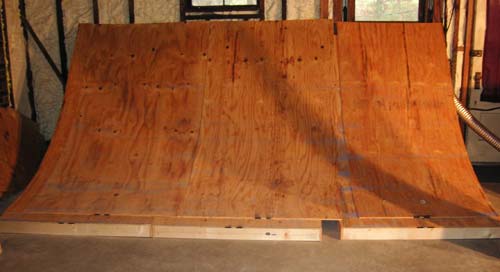
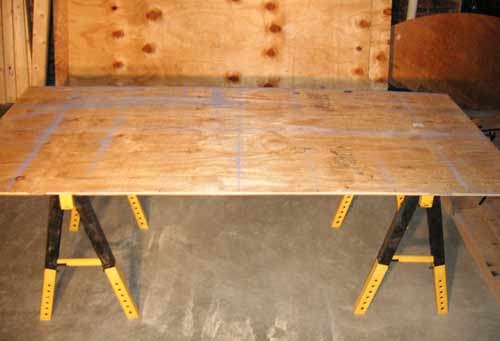


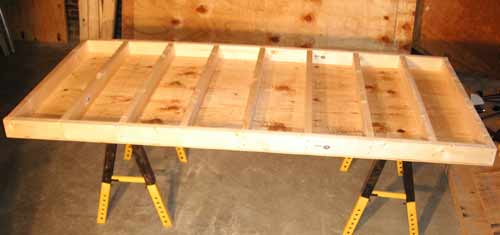


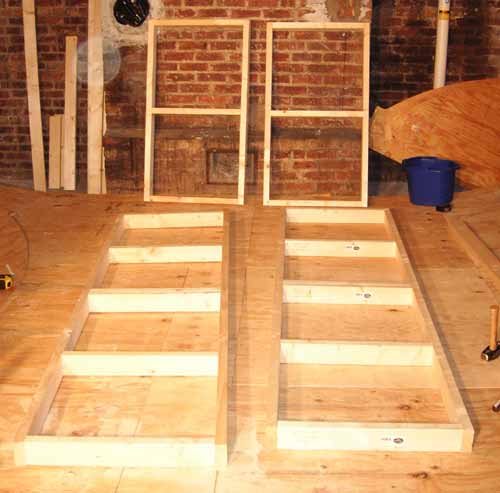
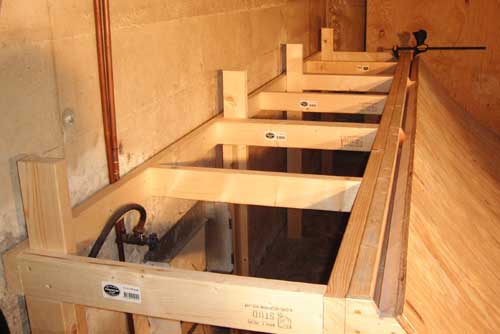
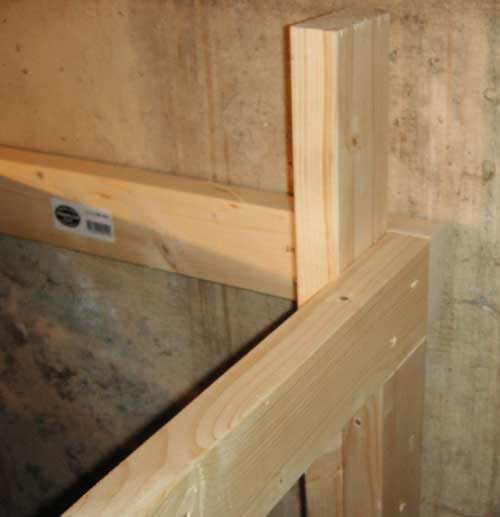
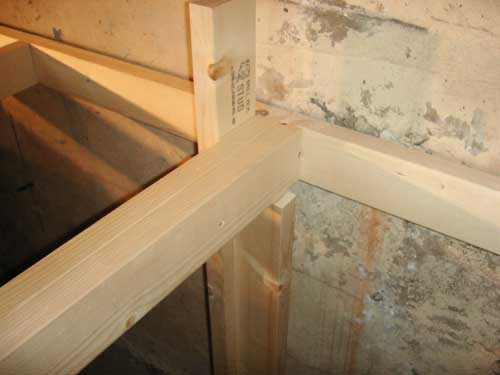
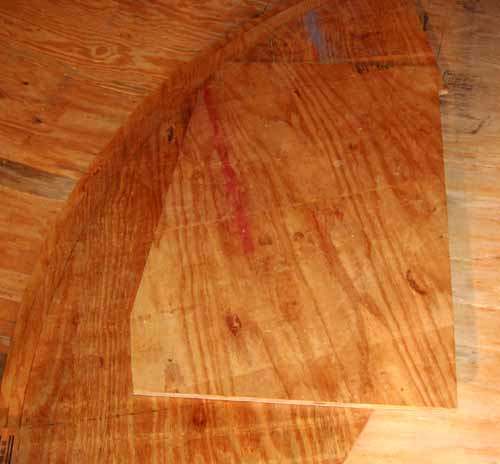
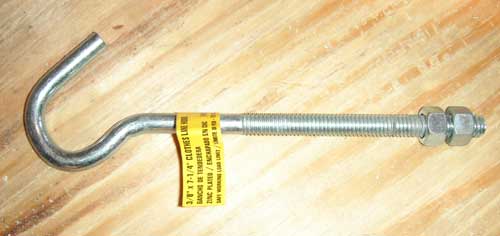
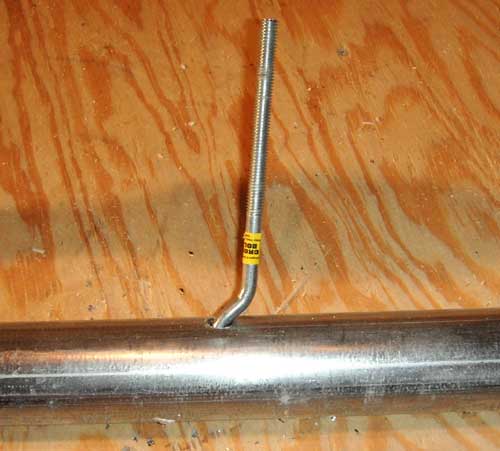

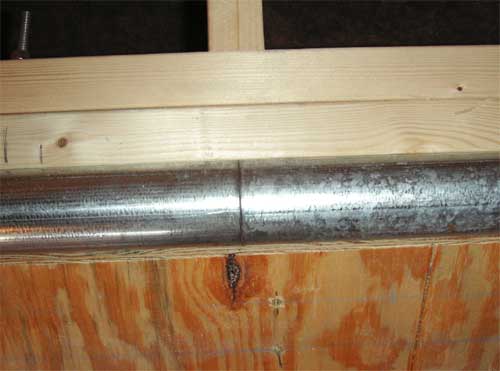
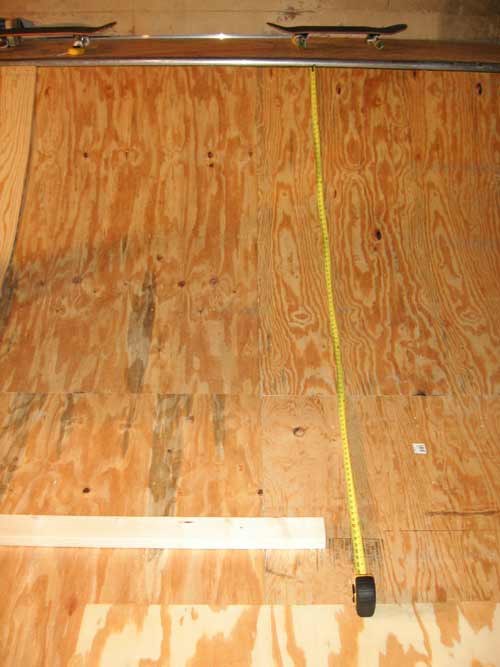
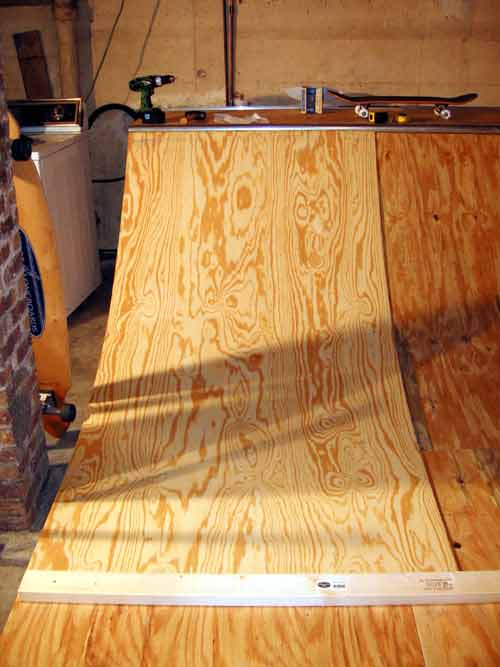
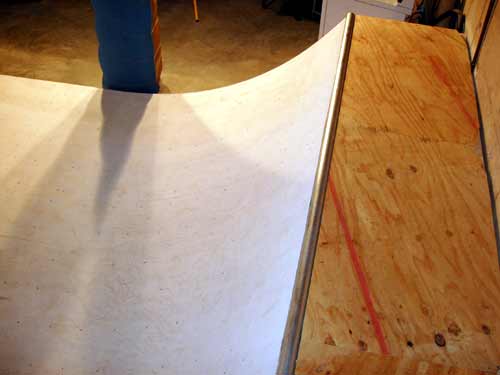
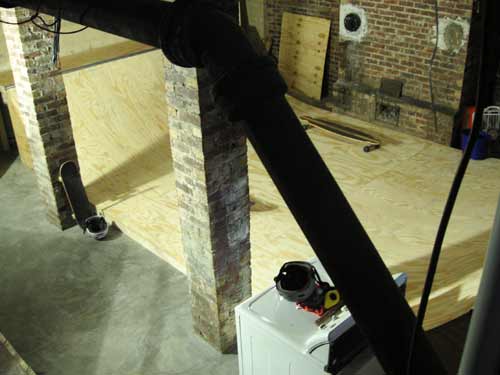

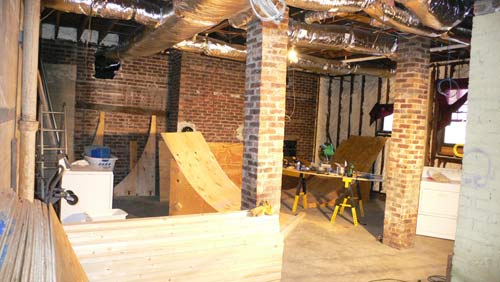

Wow! Great post. Makes me wish that I could build better, and skate better, and blog better. Is there nothing you can’t do? ;-)
Dude,
That is awesome! Boys all across America, hell the entire planet, wish that you were their Dad with a project like this! However, being a father myself I can’t help but to point out that those brick columns are really going to hurt like hell if someone happens to smack into one (I had an errant trip or two off of the ramp in my younger days). Time to redo the foundation…as another poster commented, that shouldn’t be a problem for you, seemingly nothing is.
Well, I built it for me. But Mars does use it some. I ended up doing some ghetto padding of the columns. You can see some of in the pic from the deck.
I bet you did this in about 4 hours. This would take me a season…yes a long, cold season and there would be so much cursing I woulnd’t be allowed upstairs.
guess I’m more of a hater.
Hope all is well. Hey!…don’t blame the Ant music thing on me…you had the puffy shirt (very cool it was).
Uncle Jeff who is currently addicted to Sloan once again
[…] […]
Hey, it looks like you hear from my brother more than I do. I love your blog (is that what it is? I’m still very 20th century.) Ashville looks awesome. I see your parents every once in a while and they are still as cool as ever. My family is in St. Marys, GA now. Busy with year round swimming and school. I know your family is doing great and I am glad to see that you are healthy and having a great time.
Ciao,
Jennifer
I LOVE CLOTHESLINE BOLT IDEA TO HOLD DOWN THE COPING. THAT IS SUCH A GREAT IDEA. I HAVE A BACK YARD RAMP, AND AM ALWAYS LOOKING FOR NEW IDEAS. AND THE MATH TO FIGURE OUT THE COPING DEPTH IS GREAT TOO.
OH YEH, DECK MATE ARE THE BEST IN THE WORLD. YOU MAY WANT TO MAKE A NOTE, YOU CAN ONLY GET THEM AT HOME DEPOT. GO TO LOWES, OR ANOTHER HOME STORE AND THEY HAVE SIMILAR, BUT MORE INFERIOR SCREWS.
These are some great plans. I am definitely going to borrow some of the measurements that you used, such as the radius of the transition to build my own mini ramp. I plan on building mine out of metal however since it will hlod up better when exposed to the enviroment. Thanks alot for these great plans!!!
Hi,and thanks, This is the best guide to building a half pipe I have seen so far, I am in the process of building an indoor ramp,cos it rains alot here and the urge to skate is too strong even when it’s slippery resulting in some bad falls. And the damp ruins the wood. So I’m building a large shed at the bottom of the garden. It will be 14ft wide by 31ft long by 12ft high. I was hoping to incorporate a spine cos we have a small one outside and when it’s dry it’s great fun and perfect for begginers. if you want a look here’s a link.http://www.youtube.com/watch?v=HkqQ2-2Phk8.Any way if you have any ideas on the best way I could fill the space drop me an E-mail it would be greatly appreciated.
[…] Our basement has a high ceiling. It also has a killer skateboard ramp. We put our low-buck “green screen,” about 10 yards of cheapo green fabric, in the middle of the ramp flat bottom. I put the camera on a tripod, but then lodged it in the plumbing running across the ceiling. This set up worked pretty well. If I had taken the time to tack down the fabric to get rid of the wrinkles it would have saved some time in the editing. Also using better lighting would have made this easier. I just used halogen construction lights placed on each deck of the ramp. […]
Thank you so much! Excellent post, with great pictures and explanations. You’re idea for cutting the coping notch is brilliant, and so simple. And you’re method for attaching the coping is great. I am very appreciative, and I will use your suggestions on my mini!
keep it up.
I’m old, and I need all the speed I can get…Classic! I’m with you bro.
Hey Tracy, how tall is your besement ceiling? I am planning on building a ramp in mine as well, but I only have 7’8″ clear. Any height reccomendations?
Tom, The ceiling is just over 10 ft and about a foot lower around the ductwork. The deck of the ramp is a little over 40 inches. I’m over 6 ft and it’s never been a problem, even around the ducts. If you want to stand on your board, on the deck, and not hit your head, well that math is easy. You can probably add a little height back to the ramp since you’re not usually standing straight up. Low ramps can be a lot of fun. Sometimes I wish I had a really low section for trying new stuff. Also, you can have one side be more of a wall ride, depending on how your space is set up. I would check out the projects on RPDO. There are tons of cool little ramps.
I love this blogpost. But, I finsihed reading and felt unfullfilled (sp?). We need the money shot of someone using the ramp!
Great blog dude! Since you seem to know what your doing I would love to ask some question and see if you have any pointers. Im going to be putting metal down an my ramp in the next coming week, I plan on using 12 gauge steel cold roll and then painting it with marine paint. If you have a better idea or you agree with what I’m using please let me know. The other question is that I want to add a vert wall and a bank in the future( Oh yeah the ramp is a 3 foot mini with a 4 foot extension, 16 feet wide) I know the vert wall has a tighter transition but is there a measurement for it, or do you just eyeball it. Any tips would be useful.
Thanks
Hey Danny, That sounds like a pretty serious ramp. I’m sure the steel will be super fast. I don’t know what the conventional wisdom is for wall rides on a mini. I wouldn’t think the trans needs to be any different though. If it were my ramp I would keep it the same radius as the other side.
Nice! — I’m just about to do a similar project for my son and I’m finding your blog post very informative. My ceiling height will require my mini-ramp to about 30 inches, which is about 10 inches shorter than yours. My question… how did you arrive at the 78″ transition radius? Is there a formula or rule of thumb that I should used. I was going to eyeball it but, your technique looks way better!
Hey Rob, That size just comes from experience and reading about what other folks do. Most people consider that radius somewhat mellow, and that’s what I wanted. One thing to consider is how close to vert you want it to be at the top. Generally speaking, the lower the ramp height, the tighter the trans radius. I would guess that a 72″ radius would be fine for your son, if your ramp will be 30″ tall. Good luck with your project.
Hi. ramp looks great and thanks for posting the info. i am planning to build a mini in the backyard that is somewhere around 30-36″ tall. Currently i am trying to work out what the best trans radius and flat bottom length should be to have a good ramp that is not too sluggish but still fairly mellow. there seems to be a real art in getting this right. i am hoping to use a specialy made skate surface that should speed it up a bit(i presume its similar to skatelite, but its locally made in australia). in your experience what dimensions have worked well?
I happened on your site while doing a translation from German to Eng on how to assemble skate park units – I needed vocabulary! At 50+ I still ride a mountain bike and kayak, but skateboarding is another world. Just to say thanks for a very well-written, easily understood article. Excellent instructions backed up by clear photos. As a handy-man(well, botcher in my case), I know clear instructions make all the difference. Thanks, and I hope your effort inspires youngsters to get “hands on” and away from the Play Station for a while!
Great article. Good job on documenting everything. I have been searching for someone else who has built a ramp under their circumstances with what the space they have. I am also known to be very strict and precise and this article organizes my thoughts, thanks. Hopefully I’ll be able to shred my own soon.
very very well done (in my eyes)
im tryin to build a mini ramp im only 12 i need a real easy way easy to move with like 2 people and like around 200 $ worth of stuff any suggstions
Hey Blayne, With that budget and the need to make it mobile I would build a nice quarter pipe mini. You can put it at the end of a driveway and they are pretty fun. And you can put wheels on the back side so that you can stand it up on its back end and roll it around. I’ve seen this done on a 4 ft tall quarter pipe and it worked really well. If you get more money or wood you can make second one, put them both in the same driveway, and there you have a mobile half pipe. Good luck.
hey, this is a response for #16 posted by Danny Webb. you said you were putting the steel down in 2 weeks, but maybe you have not yet….. i know how things get pushed back.
#1 and most importantly, if you have not purchased the steel yet, you may want to consider hot rolled 11 gauge 4 x 8 sheets. this would cut down on your cost of steel tremendously and the dimensions you mentioned will take quite a bit of steel.
#2 skip the paint, if you have already purchased the cold rolled steel you don’t really need to paint it because cold rolling steel is a method of protecting it from the environment, not as good as galvanized, but still effective, also i have had my hot rolled sheets on my ramp for over three years unpainted, and it is in great shape. it does rust but as long as it gets used the rust just gets cleaned right off with all those wonderful urethane scrubbers going back and forth. also (sorry i am rambling) marine paint is also really expensive, and it just chips off after a while from the abuse of skating, painting sucks anyways.
#3 also very important. if you are using 11 or 12 gauge steel, you don’t really need to skin it with ply wood. the steel is plenty strong enough on its own, and your ramp will drain better after a rain, no pooling under the steel. just squeegee, and skate….. yes!!!!!. you may want to use more heavy duty lumber though 2 x 6’s for the ribs, and treated 4 x 6’s at the flat to tranny seams.
#5 i don’t know if this matters to you very much but the last thing about steel is their standard 4 x 8 sheets are not actually 4 x 8 like plywood. they are something like 4′.25” x 8′.5”, not much by itself but when you multiply it times 4 for the width and 3 for the length you get more steel than ramp. not a big deal for the width because you can just overhang, but for the length you will be in trouble if you built your ramp according to wood measurements and cutting 11 or 12 gauge still aint no joke
hope this helps someone
Great ramp, for those who want to save money, or build on a budget, use pallets for the flatbottom. they are already prebuilt, so just screw plywood to the top of them, also they are built strong and can withold anything really you give them on a skateboard. I have built 3 ramps with pallets for the flatbottom, I’ve saved lots of money and they have all held up.
i have a question what does les desired hight mean in the diagram of the coping thing
@BOK, “less” just means subtract the height you want the coping to stick above the deck surface.
thanx madd ramp by the way
Looks good and fun. You woulda saved a few headaches if u apply the first 2 layers horizontally. they bend way easier that way.only the top layer matters for the ride. also, as well as u cut the notches for your coping, theres no need for the bolt on method. its sits in there nicely, shim it up and put a Deck Mate into each open end of coping(not the top) and it aint goin nowhere.use black steel(bout 30-40 buks a peice) instead of conduit, more durable and grinds WAY better. and lastly, it good to double up the ribs in the middle of your transition. this is where the ramp will take the most pressure. it will also help with the staggering of the layers of ply. but, again, damn good job mate
p.s. deck mates RULE!!!!!! Lowes SUCKS!!!!
wow! thank you so much. i have to do this thing called a personal project, its a project that i have to do for school (the IB program if youve heard of it) and i was thinking about making a mini ramp, but didnt know how much it costs or even a plan for a good sized mini ramp. this thing is perfectly done and well documented. thanks a lot. this thing is most definitely bossable.
hey, nice job! question for you – in the diagram you have for the coping notch, the cut looks different from the actual ramp. in the diagram the bottom cut looks straight, but on the ramp it looks like the bottom cut is angled down?? also, it would be great to see a close up of the 2x4s around the coping area to see exactly how you positioned them… haha pipe dream seeing as this post is a couple years old… anyway looks great, i’m about to build something similar!
Excellent build! I’m jealous that your ramp gets to stay inside. It’s been 20 years since I’ve built ramps. Time to build one for Christmas for my own kids now. You have given me my confidence back. Very encouraging. Thanks for sharing it with us.
Hey Billy, Glad you dig it, and thanks for your comment. You better hustle to get it done before Christmas! Let me know if you have any questions. Tracy
Hi Tracy, I am designing a half pipe for myself and while looking for info, found your site. Thanks for the excellent info and presentation. I have three questions. 1.) Radius of the transitions: I am planing for 6ft. high, 6ft. radius, transitions with an 8ft. flat between. Is 6ft. an “average” radius, not too hard/easy? I could enlarge or decrease radius and height if required.
2.) Flat: Is 8ft. between 6ft. trans. good? As planned pipe is 8ft. wide x 24ft. long, including 2ft. decks. 3.) Coping: You show a desired coping height of 1/4″. Is this typ. height for face and deck? What about 1/2?
I know all these conditions are probably personal preferences. However, its been a long time since I skated and I don’t have much to reference. Thanks very much, T.
Hey Tameem,
1. I think that’s about average. I went with a 6.5 ft radius and it feels perfect. My ramp is only half as tall as your plan. On a taller ramp is probably better to err on the big side when deciding radius.
2. I wouldn’t go less than 8 ft of flat on a ramp that tall.
3. I don’t know what’s typical for coping on a mini ramp. This one is definitely about personal preference. I would err on the side of making the notches deeper, because it’s not hard to shim it out later if you feel you need more pop. Just tack your deck surface down until you’re sure. If you need to shim it out you can slide the deck surface to fit.
Hope that helps. Keep on skateboarding. Tracy
Just wondering what you used to cut the transitions.
I’ve heard of people using a jigsaw or handsaw.
It makes it a little bit hard to get the transitions smooth.
Erik, I used a jig/scroll saw. If you take your time it’s not hard to get a smooth cut. Plus, any minor imperfections won’t be noticed once the top layers are bent into place.
Checked your site. Your artwork is awesome! Keep it up.
Umm, so let me get this straight. You didn’t use masonite? How does it ride? Aren’t you getting slivers and stuff even with the paint? And what paint? Any suggestions for outdoor ramps, what would differences be (in type of lumber/costs)? I have a little 5 foot wide by 14 foot-ish long concrete pad outside and was thinking of building a simple little two footer. Sound good, or would two feet be too steep for such a small pad, length-wise? Also, I didn’t catch the width of your’s, and would you please do a mini-sesh on only five feet of your ramp (width-wise) and tell me if it is too tight. I have the room for about a 13-14 foot wide one and then I could incorporate a bank and extention, but it would obviously cost way more and I would have to do some landscaping to level the ground. I’m a teenager so I don’t have too much money, around $600-700 I’m willing to work with, so would it be worth the time, money, and building frustration for the finished product or should I just stick with the smaller one? Your welcome to come help and skate the finished product :)
Thanks
Hey Jack, No masonite, no special paint, no problems. If I were building this for outside use I would probably have as much pressure treated lumber as I could for the framing, at least for the stuff close the ground or sitting on concrete blocks. And use some special paint.
I think a 2 footer could fit in that space, just make the decks short-ish and the trans a little tighter. You won’t need much flat. My ramp is 12 ft wide. The details are in the specs at the top of the article. Five feet is not wide enough to do much. Go for at least 8 ft.
With that amount of money you can build something pretty decent, just draw it up, make a list of the parts you need, and check the local lumber prices.
Check out rampplans.org. There are tons examples in the forums that you can use for inspiration. Good luck.
Hey tracy, I am looking to do a full U shape in the back yard, a half pipe with a side extension that connects to be a kind of bank…I want to be able to put a solid coping on it that connects everything together in the U shape. The only problem is that I find it easier to work by downloaded plans, (my math is horrible) do you know of any place that I could purchase plans describing what I want? of know anyone personally that would draw up plans for me? I would be fully willing to pay if anyone could help me out with the plans on this project. E-mail me for dimensions at dustinkellough@gmail.com
Hey Dustin, Have you checked out the forums at http://rampplans.org/ ? There are a lot of smart people in there. Many of them have posted renderings done in Google Sketchup and could likely help you with dimensioned drawings. There may also be some links to plans.
Hey, I see this is an old post but I just came across it and I’m very impressed! Great job Tracy! The ramp looks great, do you still have it? How is it holding up?
Thanks Skatehorse. It held up really well, better than me. I sold it last year and helped the buyer move it to his large covered patio. Perfect set up.
Hi Tracy, just wanted to say thanks for the great write up! I am 30 years old, and skated a lot as a teenager, but haven’t really skated in 10 years. I’ve got the wife convinced to let me build a mini in the backyard though, so I’m thinking of doing that in spring. I figure my 30 year old body would rather fall on wood than concrete… although it would be great if I could just avoid that part all together…haha
So I see you sold your ramp, are you still skating at all?
Thanks again for the great article!
Hey Pat, Thanks for the comment! Yes, I sold it. My 45 year old body was getting tired of slamming. BUT, now I’m getting into downhill. I live in the mountains and there are large sections of the Blue Ridge Parkway closed during the winter months. Scary stuff.
Tracy
I’ve built many ramps in 20 years of use, but I loved your detailed how to for reference! Thanks for taking the time to put all the info up!
Thanks for your note Devon. Glad you liked the post.
Hi Tracy,
I just finished a 3 foot mini ramp with a 5.5 foot radius. I wish I saw your site sooner. I think I would enjoy a 6.5 radius more. At 40 years old, and children starting to skate, I may have to disassemble(unscrew 700 screws) and recut the trannies or maybe take 6 inches off the height instead to make it easier. Thanks for the resource.
Alex
Hey Alex, Congrats on your ramp! Hopefully you’ll adjust to that transition. Yeah, lowering it might be an easier option. Three feet doesn’t sound high until you’re trying to learn something new. Thanks for the comment. T